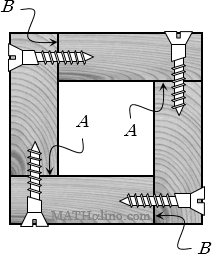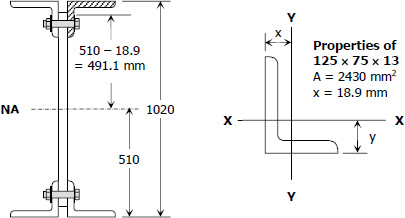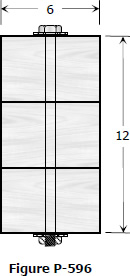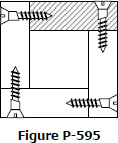Example 02: Maximum Concentrated Load a Box Beam Can Carry
Problem
A beam is built up by nailing together 25 mm thick planks to form a 200 mm × 250 mm box section as shown. The nails are spaced 125 mm apart and each can carry a shearing force of up to 1.3 kN. The beam is simply supported for a span of 3.6 m and to carry a concentrated load P at the third point of the span. The allowable shearing stress of the section is 0.827 MPa.
- Determine the largest value of P that will not exceed the allowable shearing stress of the beam or the allowable shearing force of the nails.
- What is the maximum flexural stress of the beam for the load P computed in Part (1)?








